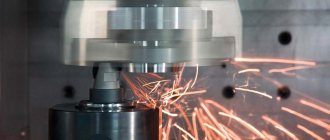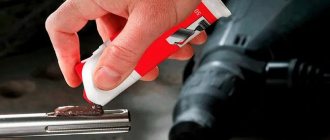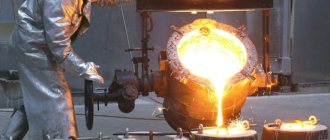Introduction
top
The purpose of this article is to introduce some of the most common materials for winding spirals, their purpose and characteristics.
Some materials are only suitable for wattage mode, others are only suitable for temperature control and one material is suitable for both modes.
The technical information provided in the article is intended for vapers of intermediate level and above, it allows you to decide on the selection of coil material and makes it easier to configure the devices.
The focus will be on single strand wires for vaping.
Tungsten and NiFe wires can also be used in vaping, but they are quite “capricious” to use and do not have any special advantages compared to more common materials.
Main characteristics of wire
top
There are several basic characteristics that apply to all types of wires, regardless of their composition. These are the diameter of the wire, its resistance, the heating time of the material and the temperature coefficient of resistance.
The diameter of the wire
One of the main characteristics of any wire is the actual diameter. It is usually specified as Gauge (ga) or AWG and is expressed as a numerical value.
The higher the number, the thinner the wire. For example, AWG 26 is thinner than AWG 24, but thicker than AWG 28.
The most common sizes from smallest to largest diameter are: 32 (0.2 mm), 30 (0.25 mm), 28 (0.32 mm), 26 (0.4 mm), 24 (0.51 mm) and 22 (0.64 mm). There are also other, even odd sizes.
Resistance
As the diameter of the wire increases, its resistance decreases and its mass increases, so it will take more time to warm up.
For example, thin wires of 32 ga and 30 ga will have higher resistance and heat up faster than 26 ga and 24 ga.
You also need to understand that the more wire used, the higher the resistance will be. This is important when winding coils, since the more turns, the higher the resistance of the coil.
Heating time
Heating time is a characteristic that shows how quickly the coil reaches the required temperature to evaporate the liquid.
This is typically more noticeable on complex multi-strand coils such as Staggered Fused Clapton, but you can also see a difference in warm-up time compared to conventional single-strand coils as the wire size and weight increases.
The use of different materials also affects the heating time of the coil, since the internal resistance of the metals differs.
In the vari-watt mode, stainless steel wires heat up faster, followed by nichrome wires, and Kanthal heats up the slowest.
TCR
In temperature control mode, in order to determine what current and power to supply to the coil, vape devices “rely” on the characteristics of the wire material.
For thermal control mode, wires are selected based on their temperature coefficient of resistance (TCR).
TCR of a wire is a parameter that shows how much the resistance of the coil will increase with increasing temperature. The device knows what the resistance of the cold spiral was and what material is used.
When heated (as the temperature rises), the resistance of the coil increases and the mod understands that the coil has become too hot and reduces the current supply to prevent burnout.
All wire types have a TCR rating, but the increase in resistance can only be measured correctly in temperature control materials.
Low alloy steels
Low alloy steels are able to resist the passage of electricity slightly more than carbon steels. Their electrical resistivity is (20...43)·10-8 Ohm·m at room temperature.
It should be noted that steel grades of this type are the worst conductors of electric current - these are 18Х2Н4ВА and 50С2Г.
However, at high temperatures, the ability to conduct electric current among the steels listed in the table practically does not differ. Specific electrical resistance of low-alloy steels ρe·108, Ohm·m
| steel grade | 20 | 100 | 300 | 500 | 700 | 900 | 1100 | 1300 |
| 15HF | — | 28,1 | 42,1 | 60,6 | 83,3 | — | — | — |
| 30X | 21 | 25,9 | 41,7 | 63,6 | 93,4 | 114,5 | 120,5 | 125,1 |
| 12ХН2 | 33 | 36 | 52 | 67 | — | 112 | — | — |
| 12ХН3 | 29,6 | — | — | 67 | — | 116 | — | — |
| 20ХН3 | 24 | 29 | 46 | 66 | — | 123 | — | — |
| 30ХН3 | 26,8 | 31,7 | 46,9 | 68,1 | 98,1 | 114,8 | 120,1 | 124,6 |
| 20ХН4Ф | 36 | 41 | 56 | 72 | 102 | 118 | — | — |
| 18Х2Н4ВА | 41 | 44 | 58 | 73 | 97 | 115 | — | — |
| 30G2 | 20,8 | 25,9 | 42,1 | 64,5 | 94,6 | 114,3 | 120,2 | 125 |
| 12MH | 24,6 | 27,4 | 40,6 | 59,8 | — | — | — | — |
| 40Х3М | — | 33,1 | 48,2 | 69,5 | 96,2 | — | — | — |
| 20Х3ФВМ | — | 39,8 | 54,4 | 74,3 | 98,2 | — | — | — |
| 50S2G | 42,9 | 47 | 60,1 | 78,8 | 105,7 | 119,7 | 124,9 | 128,9 |
| 30N3 | 27,1 | 32 | 47 | 67,9 | 99,2 | 114,9 | 120,4 | 124,8 |
Kantal (fechral)
up
Kanthal wire is a ferritic iron-chromium-aluminum (FeCrAl) alloy with good oxidation resistance and is used in vari-watt mode.
This is a good material for creating your own coils for serviced tanks, drips and the like, especially for beginners.
Kanthal is easy to work with, stiff enough to hold its shape when wound, and is a very popular material for making single-strand coils.
Kanthal is an inexpensive and widely available material and is available in most vape shops and online stores.
- Operates in variable watt mode;
- Easy to use;
- Holds its shape well;
- Wide availability;
- Inexpensive;
- Not compatible with thermal control.
Nichrome
up
Nichrome wire, like kanthal, is an excellent material for variwatt mode. It is an alloy of nickel and chromium and may contain iron. Widely used in dentistry.
Nichrome comes in different grades, but the most popular in vaping is Ni80 (80% nickel and 20% chromium).
When heated, nichrome is very similar to Kanthal, but has lower resistance and heats up faster. It is easy to wind and holds its spiral shape well.
However, the melting point of nichrome is lower than that of kanthal. When burning, you should be careful, apply a small voltage in short pulses so that the spiral does not melt.
Another possible disadvantage of nichrome is its nickel content; this material may not be suitable for people with nickel allergies.
Previously, nichrome was less common than kanthal. It has now gained popularity, especially for making complex coils, and is very easy to find in vape shops and online stores.
- Faster warm-up than Kanthal;
- Easy to use;
- Holds its shape well;
- Wide availability;
- Inexpensive;
- Not compatible with temperature control;
- Nickel content;
- Lower melting point.
Electrical resistivity of steel at different temperatures
Tables of electrical resistivity values of steels of various types and grades are presented depending on temperature - in the range from 0 to 1350°C.
In general, resistivity is determined only by the composition of the substance and its temperature; it is numerically equal to the total resistance of an isotropic conductor having a length of 1 m and a cross-sectional area of 1 m2.
The electrical resistivity of steel depends significantly on composition and temperature. As the temperature of this metal increases, the frequency and amplitude of vibrations of the atoms of the crystal lattice increases, which creates additional resistance to the passage of electric current through the thickness of the alloy. Therefore, with increasing temperature, the resistance of steel increases.
Changing the composition of steel and the percentage of alloying additives in it significantly affects the value of electrical resistance. For example, carbon and low-alloy steels conduct electric current several times better than high-alloy and heat-resistant steels, which have a high nickel and chromium content.
Carbon steels
Carbon steels at room temperature, as already mentioned, have low electrical resistivity due to their high iron content. At 20°C, the value of their resistivity is in the range from 13·10-8 (for 08KP steel) to 20·10-8 Ohm·m (for U12).
When heated to temperatures above 1000°C, the ability of carbon steels to conduct electric current is greatly reduced. The resistance value increases by an order of magnitude and can reach a value of 130·10-8 Ohm·m.
Specific electrical resistance of carbon steels ρe·108, Ohm·mTemperature, °SSteel 08KPsteel 08Steel 20Steel 40Steel U8Steel U12
| 0 | 12 | 13,2 | 15,9 | 16 | 17 | 18,4 |
| 20 | 13 | 14,2 | 16,9 | 17,1 | 18 | 19,6 |
| 50 | 14,7 | 15,9 | 18,7 | 18,9 | 19,8 | 21,6 |
| 100 | 17,8 | 19 | 21,9 | 22,1 | 23,2 | 25,2 |
| 150 | 21,3 | 22,4 | 25,4 | 25,7 | 26,8 | 29 |
| 200 | 25,2 | 26,3 | 29,2 | 29,6 | 30,8 | 33,3 |
| 250 | 29,5 | 30,5 | 33,4 | 33,9 | 35,1 | 37,9 |
| 300 | 34,1 | 35,2 | 38,1 | 38,7 | 39,8 | 43 |
| 350 | 39,3 | 40,2 | 43,2 | 43,8 | 45 | 48,3 |
| 400 | 44,8 | 45,8 | 48,7 | 49,3 | 50,5 | 54 |
| 450 | 50,9 | 51,8 | 54,6 | 55,3 | 56,5 | 60 |
| 500 | 57,5 | 58,4 | 60,1 | 61,9 | 62,8 | 66,5 |
| 550 | 64,8 | 65,7 | 68,2 | 68,9 | 69,9 | 73,4 |
| 600 | 72,5 | 73,4 | 75,8 | 76,6 | 77,2 | 80,2 |
| 650 | 80,7 | 81,6 | 83,7 | 84,4 | 85,2 | 87,8 |
| 700 | 89,8 | 90,5 | 92,5 | 93,2 | 93,5 | 96,4 |
| 750 | 100,3 | 101,1 | 105 | 107,9 | 110,5 | 113 |
| 800 | 107,3 | 108,1 | 109,4 | 111,1 | 112,9 | 115 |
| 850 | 110,4 | 111,1 | 111,8 | 113,1 | 114,8 | 117,6 |
| 900 | 112,4 | 113 | 113,6 | 114,9 | 116,4 | 119,6 |
| 950 | 114,2 | 114,8 | 115,2 | 116,6 | 117,8 | 121,2 |
| 1000 | 116 | 116,5 | 116,7 | 117,9 | 119,1 | 122,6 |
| 1050 | 117,5 | 117,9 | 118,1 | 119,3 | 120,4 | 123,8 |
| 1100 | 118,9 | 119,3 | 119,4 | 120,7 | 121,4 | 124,9 |
| 1150 | 120,3 | 120,7 | 120,7 | 122 | 122,3 | 126 |
| 1200 | 121,7 | 122 | 121,9 | 123 | 123,1 | 127,1 |
| 1250 | 123 | 123,3 | 122,9 | 124 | 123,8 | 128,2 |
| 1300 | 124,1 | 124,4 | 123,9 | — | 124,6 | 128,7 |
| 1350 | 125,2 | 125,3 | 125,1 | — | 125 | 129,5 |
Low alloy steels
Low alloy steels are able to resist the passage of electricity slightly more than carbon steels. Their electrical resistivity is (20...43)·10-8 Ohm·m at room temperature.
It should be noted that steel grades of this type are the worst conductors of electric current - these are 18Х2Н4ВА and 50С2Г. However, at high temperatures, the ability to conduct electric current among the steels listed in the table practically does not differ.
Electrical resistivity of low-alloy steels ρe·108, Ohm·mSteel grade 2010030050070090011001300
| 15HF | — | 28,1 | 42,1 | 60,6 | 83,3 | — | — | — |
| 30X | 21 | 25,9 | 41,7 | 63,6 | 93,4 | 114,5 | 120,5 | 125,1 |
| 12ХН2 | 33 | 36 | 52 | 67 | — | 112 | — | — |
| 12ХН3 | 29,6 | — | — | 67 | — | 116 | — | — |
| 20ХН3 | 24 | 29 | 46 | 66 | — | 123 | — | — |
| 30ХН3 | 26,8 | 31,7 | 46,9 | 68,1 | 98,1 | 114,8 | 120,1 | 124,6 |
| 20ХН4Ф | 36 | 41 | 56 | 72 | 102 | 118 | — | — |
| 18Х2Н4ВА | 41 | 44 | 58 | 73 | 97 | 115 | — | — |
| 30G2 | 20,8 | 25,9 | 42,1 | 64,5 | 94,6 | 114,3 | 120,2 | 125 |
| 12MH | 24,6 | 27,4 | 40,6 | 59,8 | — | — | — | — |
| 40Х3М | — | 33,1 | 48,2 | 69,5 | 96,2 | — | — | — |
| 20Х3ФВМ | — | 39,8 | 54,4 | 74,3 | 98,2 | — | — | — |
| 50S2G | 42,9 | 47 | 60,1 | 78,8 | 105,7 | 119,7 | 124,9 | 128,9 |
| 30N3 | 27,1 | 32 | 47 | 67,9 | 99,2 | 114,9 | 120,4 | 124,8 |
High alloy steels
High-alloy steels have electrical resistivity several times higher than carbon and low-alloy steels. According to the table, it can be seen that at a temperature of 20°C its value is (30...86)·10-8 Ohm·m.
At a temperature of 1300°C, the resistance of high- and low-alloy steels becomes almost the same and does not exceed 131·10-8 Ohm·m.
Electrical resistivity of high-alloy steels ρe·108, Ohm·mSteel grade 2010030050070090011001300
| G13 | 68,3 | 75,6 | 93,1 | 95,2 | 114,7 | 123,8 | 127 | 130,8 |
| G20H12F | 72,3 | 79,2 | 91,2 | 101,5 | 109,2 | — | — | — |
| G21X15T | — | 82,4 | 95,6 | 104,5 | 112 | 119,2 | — | — |
| Х13Н13К10 | — | 90 | 100,8 | 109,6 | 115,4 | 119,6 | — | — |
| Х19Н10К47 | — | 90,5 | 98,6 | 105,2 | 110,8 | — | — | — |
| P18 | 41,9 | 47,2 | 62,7 | 81,5 | 103,7 | 117,3 | 123,6 | 128,1 |
| EH12 | 31 | 36 | 53 | 75 | 97 | 119 | — | — |
| 40Х10С2М (EI107) | 86 | 91 | 101 | 112 | 122 | — | — | — |
Chromium stainless steels
Chromium stainless steels have a high concentration of chromium atoms, which increases their resistivity - the electrical conductivity of such stainless steel is not high. At normal temperatures, its resistance is (50...60)·10-8 Ohm·m.
Electrical resistivity of chromium stainless steels ρe·108, Ohm·mSteel grade 2010030050070090011001300
| X13 | 50,6 | 58,4 | 76,9 | 93,8 | 110,3 | 115 | 119 | 125,3 |
| 2Х13 | 58,8 | 65,3 | 80 | 95,2 | 110,2 | — | — | — |
| 3Х13 | 52,2 | 59,5 | 76,9 | 93,5 | 109,9 | 114,6 | 120,9 | 125 |
| 4Х13 | 59,1 | 64,6 | 78,8 | 94 | 108 | — | — | — |
Chromium-nickel austenitic steels
Chromium-nickel austenitic steels are also stainless, but due to the addition of nickel they have a resistivity almost one and a half times higher than that of chromium steels - it reaches a value of (70...90)·10-8 Ohm·m.
Electrical resistivity of chromium-nickel stainless steels ρe·108, Ohm·mSteel grade 201003005007009001100
| 12Х18Н9 | — | 74,3 | 89,1 | 100,1 | 109,4 | 114 | — |
| 12Х18Н9Т | 72,3 | 79,2 | 91,2 | 101,5 | 109,2 | — | — |
| 17Х18Н9 | 72 | 73,5 | 92,5 | 103 | 111,5 | 118,5 | — |
| Х18Н11Б | — | 84,6 | 97,6 | 107,8 | 115 | — | — |
| Х18Н9В | 71 | 77,6 | 91,6 | 102,6 | 111,1 | 117,1 | 122 |
| 4Х14НВ2М (ЭИ69) | 81,5 | 87,5 | 100 | 110 | 117,5 | — | — |
| 1Х14Н14В2М (ЭИ257) | — | 82,4 | 95,6 | 104,5 | 112 | 119,2 | — |
| 1x14N18M3T | — | 89 | 100 | 107,5 | 115 | — | — |
| 36Х18Н25С2 (ЭЯ3С) | — | 98,5 | 105,5 | 110 | 117,5 | — | — |
| Х13Н25М2В2 | — | 103 | 112,1 | 118,1 | 121 | — | — |
| Х7Н25 (ЭИ25) | — | — | 109 | 115 | 121 | 127 | — |
| Х2Н35 (ЭИ36) | 87,5 | 92,5 | 103 | 110 | 116 | 120,5 | — |
| H28 | 84,2 | 89,1 | 99,6 | 107,7 | 114,2 | 118,4 | 122,5 |
Heat-resistant and heat-resistant steels
In terms of their electrical conductive properties, heat-resistant and heat-resistant steels are close to chromium-nickel steels. The high content of chromium and nickel in these alloys does not allow them to conduct electric current, like ordinary carbon alloys with a high concentration of iron.
The significant electrical resistivity and high operating temperature of such steels make it possible to use them as working elements of electric heaters. In particular, steel 20Х23Н18 in its resistance and heat resistance in some cases can replace such a popular alloy for heaters as nichrome Х20Н80.
Specific electrical resistance of heat-resistant and heat-resistant steels ρе·108, Ohm·mTemperature, °С15Х25Т (EI439)15Х28 (ЭИ349)40Х9С2 (ЭИХ8)Х25С3Н (ЭИ261)20Х23Н18 (ЭИ 417)Х20Н35
| 0 | — | — | — | — | — | 106 |
| 20 | — | — | 75 | 80 | — | — |
| 100 | — | — | — | — | 97 | — |
| 200 | — | — | — | — | 98 | 113 |
| 400 | 102 | — | — | — | 105 | 120 |
| 600 | 113 | — | — | — | 115 | 124 |
| 800 | — | 122 | — | — | 121 | 128 |
| 900 | — | — | — | — | 123 | — |
| 1000 | — | 127 | — | — | — | 132 |
Sources:
Stainless steel
up
Stainless steel wires are the most versatile. They can be used in both variable wattage and temperature control modes.
They are an alloy of chromium, nickel and carbon. Stainless steel contains only about 10% nickel, but people with nickel allergies should not take risks.
There are many variations of stainless steel wires. In vaping, the most popular brands are SS316L and SS317L. Other brands such as 304 and 430 are also used in vaping, but quite rarely.
Stainless steel spirals hold their shape well. Like nichrome, they heat up faster than kanthal due to lower resistance with the same wire diameter.
Please note that when burning or cleaning the wire, do not heat the stainless steel too much as this may release unwanted chemical compounds.
The best option would be to make a spiral with a distance between the turns (space coil) so that there is no need for burning.
As with nichrome and kanthal, stainless steel wire can be easily found in vape shops and online stores.
- Operation in two modes: VW (variable watts) or TC (thermal control);
- Faster warm-up than Kanthal;
- Easy to use;
- Holds its shape well;
- Wide availability;
- Nickel content (low);
- Do not burn at high power.
High alloy steels
High-alloy steels have electrical resistivity several times higher than carbon and low-alloy steels. According to the table, it can be seen that at a temperature of 20°C its value is (30...86)·10 -8 Ohm·m.
At a temperature of 1300°C, the resistance of high- and low-alloy steels becomes almost the same and does not exceed 131·10 -8 Ohm·m.
Electrical resistivity of high-alloy steels ρe·10 8 , Ohm m
| steel grade | 20 | 100 | 300 | 500 | 700 | 900 | 1100 | 1300 |
| G13 | 68,3 | 75,6 | 93,1 | 95,2 | 114,7 | 123,8 | 127 | 130,8 |
| G20H12F | 72,3 | 79,2 | 91,2 | 101,5 | 109,2 | — | — | — |
| G21X15T | — | 82,4 | 95,6 | 104,5 | 112 | 119,2 | — | — |
| Х13Н13К10 | — | 90 | 100,8 | 109,6 | 115,4 | 119,6 | — | — |
| Х19Н10К47 | — | 90,5 | 98,6 | 105,2 | 110,8 | — | — | — |
| P18 | 41,9 | 47,2 | 62,7 | 81,5 | 103,7 | 117,3 | 123,6 | 128,1 |
| EH12 | 31 | 36 | 53 | 75 | 97 | 119 | — | — |
| 40Х10С2М (EI107) | 86 | 91 | 101 | 112 | 122 | — | — | — |
Selecting wire for variwatt
top
Most vapers prefer to use the variwatt mode, as it is easier. Kanthal, stainless steel and nichrome are the three most popular materials for variwatt. What to choose?
If there is an allergy to nickel or suspicion of it, then preference should be given to kanthal. Completely abandon nichrome and avoid stainless steel, since although the nickel content in it is not high, it is better to be careful.
Kanthal has been preferred by vapers for a long time due to its ease of use and higher resistance, especially those who like to puff tightly on cigarettes. The longer warm-up time is even more of a plus here, since you can inhale slowly and for a long time.
Nichrome and stainless steel, on the other hand, are great for hookah draws and have lower resistance. This does not mean that these materials cannot be used for MTL devices.
Those who love subwoofers prefer to use low resistance and fast heating, which is facilitated by nichrome and stainless steel.
Flavor transfer, of course, is a subjective matter, but there are many reviews from vapers that windings made of nichrome and stainless steel have better flavor transfer than those made from Kanthal.
Chromium stainless steels
Chromium stainless steels have a high concentration of chromium atoms, which increases their resistivity - the electrical conductivity of such stainless steel is not high. At normal temperatures, its resistance is (50...60)·10 -8 Ohm·m.
Electrical resistivity of chromium stainless steels ρe·10 8 , Ohm m
| steel grade | 20 | 100 | 300 | 500 | 700 | 900 | 1100 | 1300 |
| X13 | 50,6 | 58,4 | 76,9 | 93,8 | 110,3 | 115 | 119 | 125,3 |
| 2Х13 | 58,8 | 65,3 | 80 | 95,2 | 110,2 | — | — | — |
| 3Х13 | 52,2 | 59,5 | 76,9 | 93,5 | 109,9 | 114,6 | 120,9 | 125 |
| 4Х13 | 59,1 | 64,6 | 78,8 | 94 | 108 | — | — | — |
Nickel
up
Nickel wire, so-called Ni200 grade, is pure nickel. This material was the first to be used for temperature control mode and is also the first on the list of materials that cannot be used in variable watt mode.
Nickel has two main disadvantages. The first disadvantage is the softness of the material - it is difficult to use it when creating spirals, and after installation the spiral can easily become deformed.
The second drawback is the composition of the material. Some people may experience discomfort with pure nickel windings, and there are many people with nickel allergies or varying degrees of sensitivity.
Although other materials such as nichrome and stainless steel also contain nickel, it is not the main component in them.
Nickel wires are still popular among temperature control hobbyists and are relatively easy to find commercially.
- Operation in temperature control mode;
- Not very convenient to use;
- Doesn't hold its shape well;
- Nickel content.
Heat-resistant and heat-resistant steels
In terms of their electrical conductive properties, heat-resistant and heat-resistant steels are close to chromium-nickel steels. The high content of chromium and nickel in these alloys does not allow them to conduct electric current, like ordinary carbon alloys with a high concentration of iron.
The significant electrical resistivity and high operating temperature of such steels make it possible to use them as working elements of electric heaters. In particular, steel 20Х23Н18 in its resistance and heat resistance in some cases can replace such a popular alloy for heaters as nichrome Х20Н80.
The resistivity of metals is their ability to resist electric current passing through them. The unit of measurement for this quantity is Ohm*m (Ohm-meter). The symbol used is the Greek letter ρ (rho). High resistivity values mean poor conductivity of electrical charge by a particular material.
Titanium
up
Titanium wire is pure titanium and is designed for temperature control applications.
There is some controversy surrounding the safety of titanium wire when used in vaping.
When heated above 648 °C (1200 °F), titanium can release the toxic compound titanium dioxide. Additionally, once titanium catches fire, it is extremely difficult to extinguish.
For this reason, some shops do not carry titanium wire to avoid liability and safety issues.
Nevertheless, some vapers use this material. If the temperature control mode on the device is working properly, then there is no reason to worry about titanium dioxide poisoning or fire.
Manufacturers of vape devices have already thought about this. But you definitely shouldn’t burn through titanium spirals!
Titanium is easy to work with when making and winding spirals; it holds its shape well. But if the spiral is deformed, it is quite difficult to correct it.
- Operation in temperature control mode;
- Easy to use;
- Holds its shape well;
- May be toxic;
- Fire hazard;
- Low availability in stores.
Selecting wire for thermal control
back to top
Stainless steel wires are the clear winner among other thermal control materials. They are easy to use, hold their shape well and work in two modes (TC and VW).
Due to the nickel content of stainless steel, although very low, people with an allergic reaction to it should probably avoid using this material.
What should you do if you are allergic to nickel, but want to vape in temperature control mode? In this case, you should give preference to titanium. But you should always remember that it should not be overheated.
Conclusion
back to top
line is that the choice of coil material is an important variable when looking for “zen” in vaping. In fact, finding “your” material affects the positive vaping experience.
The thickness of the wire and the number of turns only affects the heating speed, current, power and resistance. By changing the number of turns, the diameter of the spiral and the thickness of the wire, you can get a completely new experience.
Ultimately, it is the positive vaping experience that makes vaping enjoyable.








